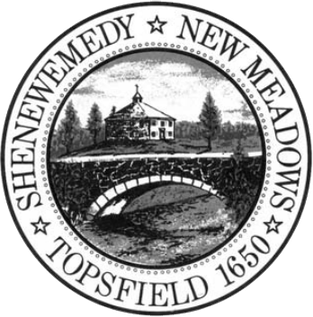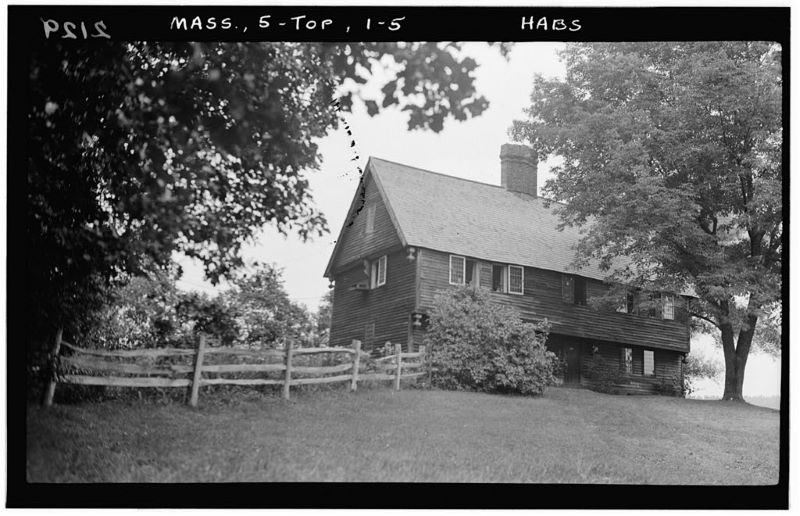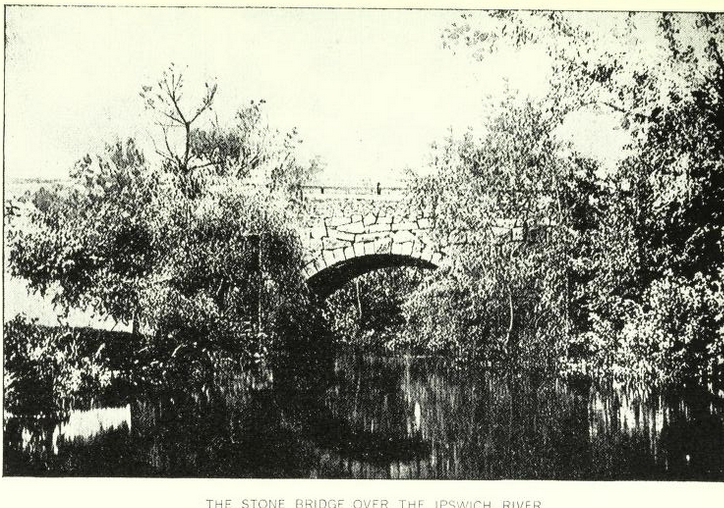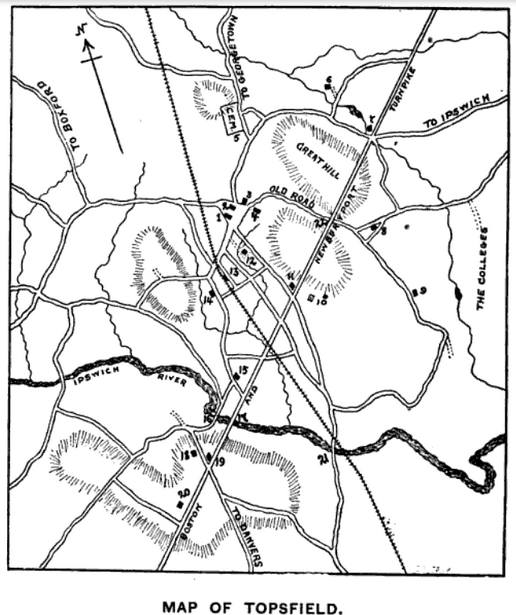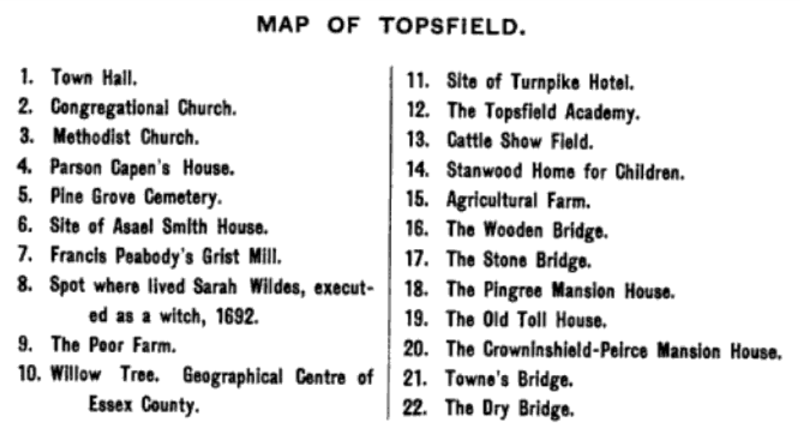Topsfield is a historic town in Massachusetts. It was first inhabited by the Agawam Tribe before being purchased from the tribe by the Massachusetts Bay Company and settled as part of the Massachusetts Bay Colony.
The following is a timeline of the history of Topsfield:
Pre-colonization:
- The area is occupied by a small tribe of Native Americans known as the Agawam. The Agawam’s territory extends from the ocean to Will’s Hill in Middleton.
1638:
- On June 28, John Winthrop, Jr., on behalf of the Massachusetts Bay Company, purchases the rights for the territory that includes Topsfield from the chief of the Agawam tribe, Masconomet, for 20 pounds sterling. The colonists name the area New Meadows.
1648:
- The Massachusetts General Court decides to change the name of New Meadows to Topsfield.
1650:
- Topsfield is incorporated as a town in the Massachusetts Bay Colony.
1658:
- The earliest town records of Topsfield are destroyed during a fire in the town clerk’s house.
1661:
- Colonist Robert Smith purchases a 208-acre farm that is located partially in Boxford and partially in Topsfield. Smith is the great-great-great grandfather of Joseph Smith Jr, founder of the Church of Jesus Christ of Latter Day Saints.
1663:
- A small meetinghouse is built on what is now Haverhill Road.
1668:
- The Pritchett – Hood House, a First Period House, is built on Pond Street.
1670:
- The Zaccheus Gould House, a First Period House, is built on River Road. It is believed the house was built for Zaccheus possibly by his father John Gould, a prominent resident of Topsfield.
1675:
- A five-foot-tall stone wall is constructed around the meetinghouse on Haverhill Road to protect it from Native American attacks during King Philip’s War.
1680:
- On November 19, John Lansom purchased 50 acres of farmland from William Howlett on what is now Asbury Street and established the Lansom Farm.
- The Arthur J. Lamson House, a First Period house, is built on the Lansom Farm on Asbury Street.
1683:
- The Reverend Joseph Capen House, a First Period house, is built on Howlett Street.
1686:
- The Hubbard House, a First Period House, is built on Prospect Street.
1690:
- The Stephen Foster House, a First Period house, is built on North Street.
- The Captain Joseph Gould House, a First Period house, is built on Washington Street.
- The Thomas Dorman House is built on what is now Boardman Lane.
1692:
- On April 19, Topsfield resident Abigail Hobbs is arrested on charges of witchcraft during the Salem Witch Trials.
- On April 21, Topsfield resident Mary Easty, sister of accused witch Rebecca Nurse, is arrested on charges of witchcraft.
- On April 22, Topsfield residents Deliverance and William Hobbs, parents of Abigail Hobbs, and Sarah Wildes are arrested on charges of witchcraft.
- On May 29, Topsfield resident Elizabeth Howe is arrested on charges of witchcraft.
- On July 19, Elizabeth Howe and Sarah Wildes are hanged for witchcraft in Salem.
- On September 22, Mary Easty is hanged for witchcraft in Salem.
1693:
- The Stanley Lake House, a First Period House, is built on River Road.
- Samuel Smith, son of Robert Smith, purchases the Thomas Dorman House on what is now Boardman Lane in Topsfield. The farm becomes known as the Smith Homestead. Joseph Smith Sr, father of Joseph Smith Jr the founder of Mormonism and the Latter Day Saint movement, is born in this house in 1771.
1710:
- The Captain Thomas Baker House – Brookdale Farm, a Colonial Revival-style house, is built on Mansion Drive.
1717:
- The Pine Grove Cemetery, a 50-acre cemetery, is established on the former site of the meetinghouse on Haverhill Road.
1718:
- The John French – Joseph Andrews House, a Colonial Revival-style house, is built on Howlett Street.
1720:
- The Samuel Boyd – Matthew Peabody House, a Colonial-style house, is built on Salem Road.
1730:
- The John Averill House, a Colonial-style house, is built on Averill Road.
1733:
- The Emerson – Jordan House, a Colonial-style house, is built on Main Street.
1738:
- The Donaldson – Hobbs Grist Mill is built on Ipswich Road.
1741:
- The Dr. Richard Dexter House, a Colonial-style house, is built on the former Isaac Esty farm on South Main Street.
1756:
- The Topsfield Congregational Church Parsonage, a Colonial-style house, is built on High Street.
1760:
- The Daniel Lake – Henry Bradstreet House, a Georgian-style house, is built for Daniel Lake on River Road.
1761:
- The Jacob Dwinell House, a Colonial-style farm house, is built on Salem Road.
1765:
- The Daniel Porter – Benjamin Conant House, a Colonial-style house, is built on Rowley Bridge Street.
- The Dorman House, a Colonial-style house, is built on Rowley Street.
- The Deacon John Gould – Rev. Asahel Huntington House is built on Washington Street.
1768:
- The Jacob Perkins III House, an Italianate-style house, is built on Central Street.
- The Daniel Esty – Homan House, a Colonial-style house, is built on Salem Road.
- The Nathaniel Fiske – George Winslow Dwinell House, a Colonial-style house, is built on Sleepy Hollow Road.
1769:
- The John Balch House, a Georgian-style house, is built on Hill Street.
- The Deacon Solomon Dodge House, a Georgian-style farm house, is built for Deacon Solomon Dodge on Perkins Row.
- The John Balch – Captain John Bradstreet House, a Georgian-style farm house, is built on River Road.
1771:
- The Samuel Bradstreet – Thomas Emerson Proctor House, a Colonial Revival-style house, is built for Samuel Bradstreet (grandson of Governor Simon Bradstreet) on Perkins Row and was later owned by Thomas Proctor in the 19th century.
1772:
- The Jacob Dwinell Jr. – John Peabody House, a Georgian-style house, is built on Wenham Road.
1775:
- The George P. Dow House, a Federal-style house, is built for John Baker on South Main Street and was later sold to George P. Dow in 1893.
1778:
- The Captain Joseph Cummings and Captain Thomas Cummings House, a Federal-style house, is built for the elderly Captain Joseph Cummings and his grandson Captain Thomas Cummings, on Asbury Street.
- The Conant – Palmer House, a Colonial-style house, is built on North Main Street.
1784:
- The William Andrews House, a Federal-style house, is built sometime before on North Main Street.
1788:
- The Tilton House, a Greek Revival-style house, is built on Lockwood Lane.
1789:
- The Merriam – Williams House, a Federal-style house, is built on the Bare Hill Farm on North Main Street.
1791:
- The John Gould Jr. House, a Colonial Revival-style house, is built on Washington Street.
- The Smith family leaves Topsfield when Asael Smith and his son Samuel move to Tunrbidge, Vermont.
1793:
- The Mary Towne House, a Greek Revival-style house, is built on Wenham Road.
1797:
- The Dr. John Merriam – Todd House, a Federal-style house, is built on Haverhill Road.
1800:
- The Captain Daniel Bixby house, a Greek Revival-style house, is built on Cross Street.
- The Caroline Pray House is built on South Main Street.
1804:
- The Newburyport Turnpike is constructed on Boston Street.
1808:
- The Dry Bridge – Howlett Street Bridge is constructed on Boston Street.
1818:
- The Essex County Agricultural Society is formed.
1820:
- The William Iles house, a colonial-style house built in 1719, is moved from Boxford to Boxford Road in Topsfield.
- The Essex County Agricultural Society hosts its first cattle show, which is the first annual Topsfield Fair.
1822:
- The Deacon Solomon Dodge House and the farm on Perkins Row were sold to the town of Topsfield to serve as an almshouse. Residents were required to work on the farm to earn their lodging.
1830:
- Poor’s Store, a grocery store, is built for Nathaniel and Frederick Perley on Main Street and was later sold to Joseph B. Poor in 1883 and continued as a general store.
1832:
- The Augustus W. Smith Tavern, a Federal-style house, is built on Washington Street.
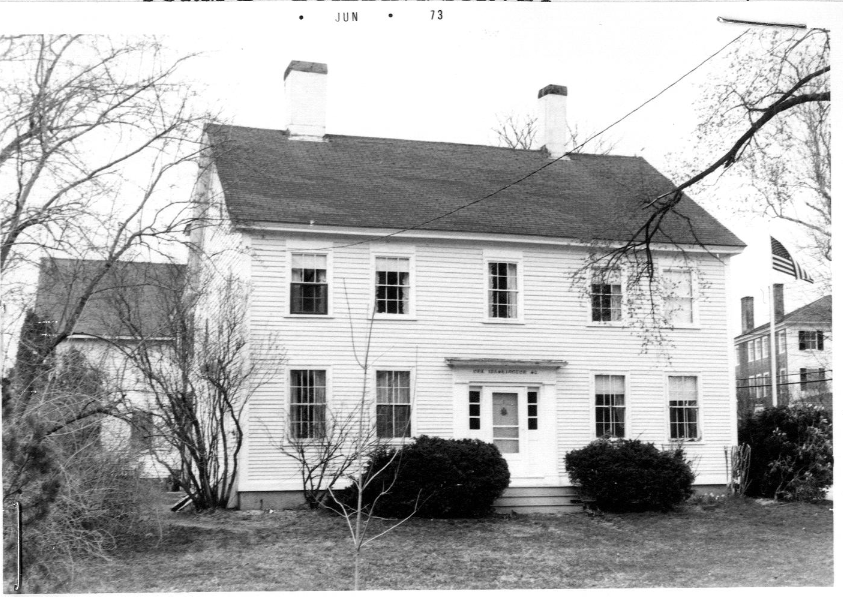
1841:
- The Henry A. Merriam Shoe Shop, a Greek Revival-style commercial building, is constructed near the corner of Haverhill and Ipswich Road but later moved to North Main Street.
1842:
- Topsfield Congregational Church, a Greek Revival-style church building, is constructed on Main Street.
1850:
- The population of Topsfield is 1,170.
1853:
- The Stone Bridge is constructed over the Ipswich River on Boston Street.
- The Topsfield Methodist Church, a Greek Revival-style church building, is constructed on North Common Street.
1855:
- The Topsfield Odd Fellows Lodge, an Italianate-style house, is built for Mary Taylor on South Main Street and later purchased by Joseph Stanwood in 1872 who gave it to the International Order of Odd Fellows in the 1886.
1856:
- The Old Lake Cemetery, a 17-acre cemetery, is established on River Road.
1857:
- The Dr. Richard Dexter House is donated to the Essex Agricultural Society to be used as an experimental farm.
1860:
- The population of Topsfield is 1,292.
1866:
- The Topsfield Nurseries Windmill is built on Prospect Street.
1870:
- The population of Topsfield is 1,213.
1873:
- A memorial is erected in the Pine Grove Cemetery in memory of the Smith family.
- The Topsfield Town Hall, a Second Empire-style municipal building, is constructed on West Common Street.
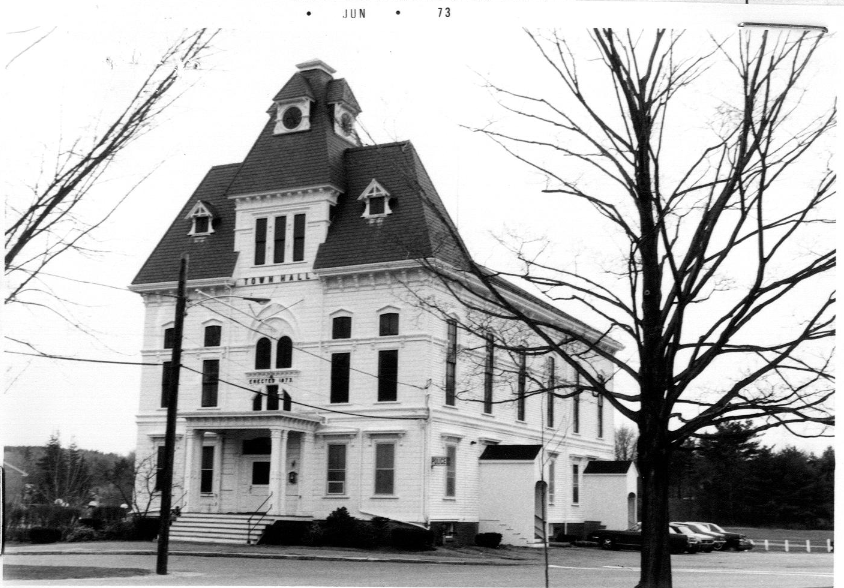
1875:
- The Thomas Dorman House on the Smith Homestead is razed.
1880:
- The population of Topsfield is 1,165.
1890:
- The population of Topsfield is 1,022.
1900:
- The almshouse on Perkins Row is closed after it is sold to Dr. Henry F. Sears.
- The population of Topsfield is 1,030.
1910:
- The population of Topsfield is 1,174.
1914:
- The Wounded Color Sergeant Marker, a bronze statue of a Civil War soldier, is erected on Main Street in honor of the Civil War soldiers of Topsfield.
1920:
- The John L. Saltonstall Watering Trough – Sarcophagus is erected on River Road.
- The population of Topsfield is 900.
1922:
- The Saint Rose Roman Catholic Church, a Romanesque Revival-style building, is constructed on Park Street.
1930:
- The population of Topsfield is 986.
1931:
- Salem Road Bridge over the Ipswich River is constructed on Salem Road.
1935:
- The Topsfield Town Library, a Classical Revival-style building, is constructed on South Common Street.
1940:
- The population of Topsfield is 1,150.
1950:
- The Cedar Crest Machining Incorporated building in constructed on Main Street.
- The Village Woodworking Shop is built on Main Street.
- The population of Topsfield is 1,412.
1960:
- The Topsfield Trinity Church is built on River Road.
- The Bank of New England – North Branch, a Colonial Revival-style building, is constructed on Main Street.
- The Topsfield Shopping Center is constructed on Main Street.
- The Topsfield House of Pizza is constructed on Main Street.
- The population of Topsfield is 3,351.
1964:
- The Post Office – Topsfield Main Branch, a Colonial Revival-style building, is constructed on Main Street.
1965:
- The Cumberland Farms Store is constructed on Main Street.
1968:
- The Topsfield Lutheran Church is built on Boston Street.
1970:
- The population of Topsfield is 5,225.
1976:
- The H. C. Thompson General Contracting Company is built on Main Street.
1980:
- The Entering Topsfield sign is erected on Boston Street.
- The population of Topsfield is 5,709.
1990:
- The population of Topsfield is 5,754.
2000:
- The population of Topsfield is 6,141.
2005:
- In October, a historical marker is erected near the former site of the Smith Homestead on Boardman Lane as a tribute to the Smith family.
2010:
- The population of Topsfield is 6,085.
2020:
- The population of Topsfield is 6,569.
- In September, a memorial to the Smith family, a nine-foot-tall granite obelisk, is erected in the Pine Grove Cemetery in the Smith family plot. The inscriptions reads:
“The Smiths of Topsfield: Five generations of a remarkable American family resided in Topsfield beginning with Robert Smith who came to Massachusetts in 1638.
Robert Smith (1626-1693)
Samuel Smith I (1666-1748)
Samuel Smith II (1714-1785)
Asael Smith (1744-1830)
Joseph Smith Sr (1771-1840)
Joseph Smith Sr is the father of Joseph Smith Jr., ‘The American Prophet,’ founder and president of The Church of Jesus Christ of Latter-day Saints.”
Sources:
Dow, George Francis. History of Topsfield Massachusetts. Topsfield Historical Society, 1940.
Nevins, Winfield S. Witchcraft in Salem Village in 1692. North Shore Publishing Company, 1892.
Historical Collections of the Topsfield Historical Society, Vol. XIII. Topsfield Historical Society, 1908
“Facts about Topsfield.” Topsfield Ma, topsfield-ma.gov/about-topsfield/pages/facts-about-topsfield
Mays, Kenneth. “Portraits of the Past: The old Smith homestead.” Deseret News, 27 May. 2010, deseret.com/2010/5/27/20117563/portraits-of-the-past-the-old-smith-homestead
Mays, Kenneth. “Picturing history: Topsfield, Massachusetts, home of Joseph Smith’s ancestors.” Deseret News, 16 Oct. 2019, deseret.com/2019/10/16/20853375/picturing-history-topsfield-massachussetts-joseph-smiths-ancestors
“Historic Markers in Topsfield, Massachusetts (2005)” Ensign Peak Foundation, ensignpeakfoundation.org/historic-markers-in-topsfield/
“Robert Smith Topsfield, Massachusetts farm site.” BYU Library, contentdm.lib.byu.edu/digital/collection/RelEd/id/4342
“Smith Homestead, Topsfield, Massachusetts, USA.” Ensign Peak Foundation, ensignpeakfoundation.org/smith-homestead/
Walker, Sydney. “Topsfield: The prequel to Joseph Smith’s story that helped lay the groundwork for the Restoration.” The Church News, 7 Dec. 2020, thechurchnews.com/2020/12/7/23217703/joseph-smith-ancestors-topsfield-massachusetts-monument-president-ballard
“Pine Grove Cemetery.” Salem Witch Museum, salemwitchmuseum.com/locations/pine-grove-cemetery/
MACRIS, Massachusetts Cultural Resource Information System, mhc-macris.net/queryresults

